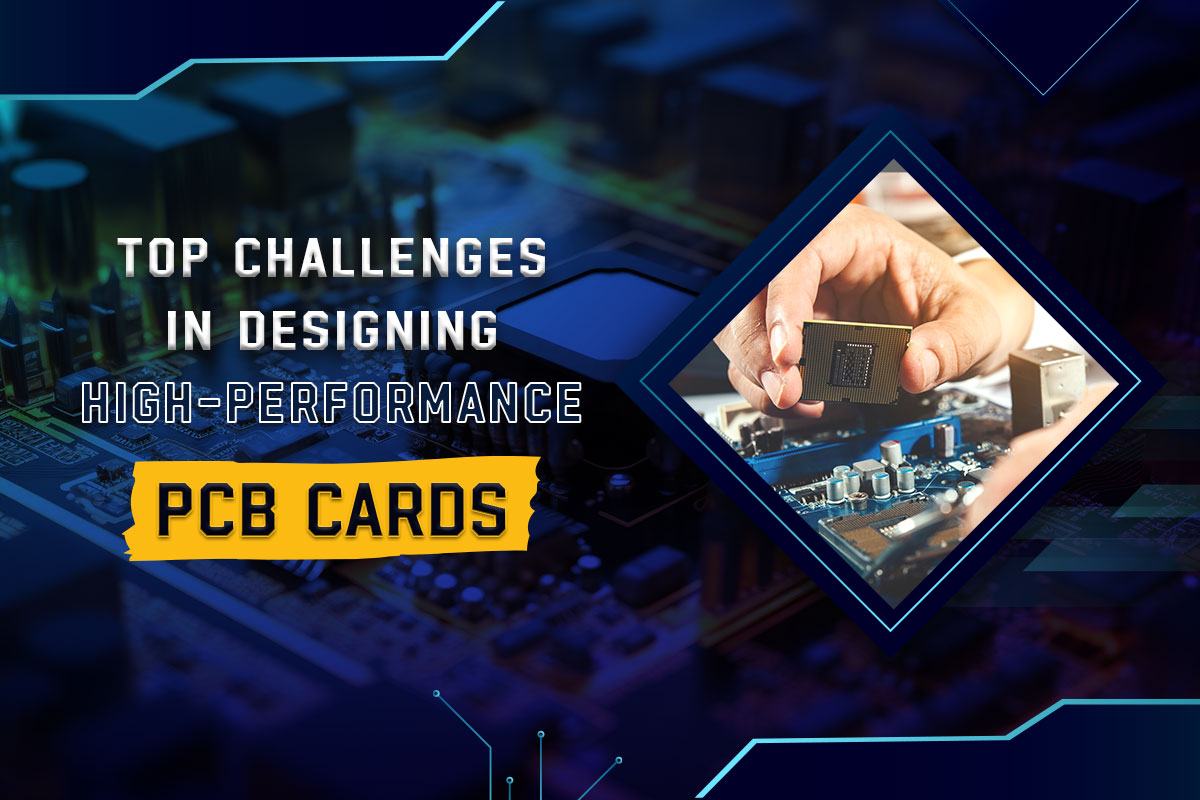Top Challenges in Designing High-Performance PCB Cards
Designing high-performance PCB (Printed Circuit Board) cards is a critical task for engineers in industries ranging from consumer electronics to aerospace and automotive. With increasing demands for faster speeds, smaller form factors, and enhanced functionality, the complexity of PCB designs has skyrocketed. In this post, we’ll explore the most common and pressing challenges faced by engineers when designing high-performance PCBs.
1. Material Selection
The selection of materials is the key factor in the performance of PCB cards. For high-performance applications, materials should be resistant to high temperatures and retain electrical properties over long periods. The choice of substrates, e.g., FR4, polyimide, and flexible PCBs, is usually based on parameters such as thermal conductivity, signal speed, and ruggedness.
Challenge: Balancing performance and material requirements with cost is a major issue. The engineer needs to balance the need for materials that have the necessary properties and performance levels with the available budget.
2. Thermal Management
As circuit boards grow more powerful, it becomes harder to control heat generation. High-performance PCBs produce more heat, which can lead to components failing or degrading over time if not controlled. Engineers employ heat sinks, thermal vias, and sophisticated cooling techniques to dissipate heat efficiently.
Challenge: Thermal management in an efficient way without compromising on performance or the size of the PCB is a tricky balance to maintain. Excessive heating results in signal distortion, shorter lifespan, and failure of the system.
3. Signal Integrity
Signal integrity is the condition of electrical signals as they propagate along the PCB traces. In high-speed designs, maintaining signal integrity is essential for the proper functioning of the system. Trace length, impedance matching, and electromagnetic interference (EMI) are all influences that can affect the clarity and strength of signals.
Challenge: Keeping signal integrity intact in high-speed circuits while ensuring that the board remains small and does not generate excessive noise is one of the toughest challenges for PCB designers. Poor routing and ineffective shielding can lead to data errors and performance problems.
4. Reducing Crosstalk and Noise
Crosstalk, or the unplanned coupling of signals between traces next to each other, can impact the operation of high-speed PCBs severely. It is essential that the signals are isolated and traces sufficiently spaced to minimize noise and interference.
Challenge: Designers need to incorporate shielding methods, including the use of ground planes, and optimize the design to avoid crosstalk without adding board size or complexity.
5. Power Distribution and Decoupling
High-performance PCBs frequently require stable power sources and efficient power distribution. As components consume more power, voltage fluctuations may arise, causing instability and unpredictable behavior. Effective decoupling methodologies, such as installing capacitors at key locations, smooth out power supply changes and make the system operate stably.
Challenge: It is often difficult to achieve an even power distribution over the whole board with minimal affect on signal integrity, particularly with high-density designs.
6. Size Constraints
As the tendency is towards devices being smaller and more compact, PCB designers continually have to make more functionality available in less room. This involves accuracy in the layout and in component placement to be able to fit all of the required items without affecting performance.
Challenge: Packing high-performance features into small form factors without compromising power or functionality is a matter of meticulous planning and sophisticated manufacturing processes.
7. Manufacturing Tolerances
As PCB designs grow more complex and include finer components, manufacturing tolerances become an issue of importance. Small mistakes in trace width or component positioning can lead to a faulty board.
Challenge: Maintaining the end PCB as close to the designer’s requirements while considering manufacturing processes tolerances and limitations is a never-ending challenge. This also means aligning the components so accurately that no misalignment during assembly occurs.
8. Testing and Debugging
After the PCB has been designed and produced, intense testing is needed to make sure that it will perform as required. Testing is done by ensuring signal integrity, thermal behavior, and overall operation, typically through instruments such as oscilloscopes and spectrum analyzers.
Challenge: High-speed PCBs can be difficult to test, having specialized equipment and processes to certify all parameters achieve the required specs. Moreover, debugging a flaw in a tight, high-performance board can consume a lot of time and resources.
9. Environmental Considerations
PCBs in some applications must be capable of withstanding aggressive environments, for example, extreme temperatures, wetness, or chemical exposure. As an example, PCBs for automotive or aviation industries must satisfy strict environmental requirements.
Challenge: Developing PCBs that are durable and efficient in harsh environmental conditions calls for identifying proper materials, coatings, and protective schemes.
10. Cost and Time Constraints
Finally, high-performance PCB designs tend to have tight project deadlines and limited budgets. In optimizing the design for performance, it’s also important to maintain costs without sacrificing quality.
Challenge: Meeting the need for cutting-edge performance features within the financial constraints of the project calls for meticulous planning, material choice, and project management expertise.
